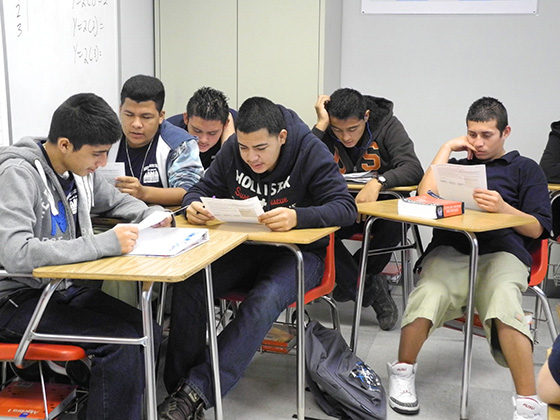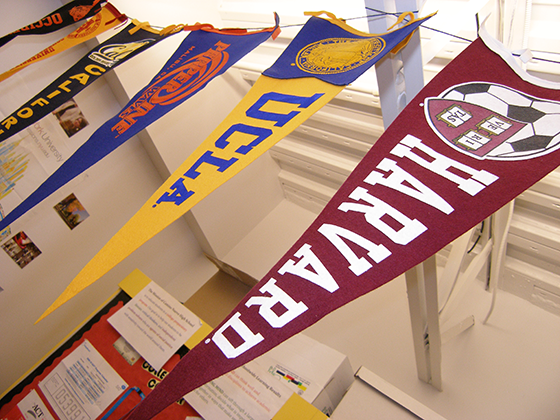LILL Helps Teachers Better Understand Their Approach to Teaching
By Justin Hofstetter, Teacher and Librarian, Alta Vista Charter Middle School
Sometimes it seems like I only ever consider the “why” of my teaching methods when I am debriefing after an observation (or interviewing for a position somewhere else). I default to “teacher-ese” and say all the right things about why the lesson worked or why I had the students working in a particular manner or configuration.
In reality, I don’t plan my lessons with all those things in mind. I plan my lessons and my strategies based on what works intuitively; somehow my students end up making gains. Until I’m forced to put language to the educational philosophies that underlie those practices, I just know that I do them because they keep my students engaged.

Last summer, I presented one such strategy at the Leadership Institute for Latino Literacy (LILL): Jaguar Circles, a nonfiction group reading and discussion protocol that has always kept my students engaged. I could speak at length about how my kids worked and what serious gains in testable nonfiction reading skills resulted. When pressed, however, I never had any idea why this worked. It was a fantastic tool, like my computer or my cell phone, that I could use well and understand how to use on an intuitive level, but could never begin to explain why it worked.
Then LILL provided me with two great opportunities.
The first was the opportunity to share this with other teachers so that they might see those same gains. I am terrible at self-promotion, and only submitted an application because my principal urged me to share what helped many of my sixth graders grow as many as three grade levels in a single semester on their informational text skills. I didn’t see it as an opportunity to write an exact prescription to those other teachers as much as a way of allowing them to see my methods (as I do with curricula and recipes) and adapt it to their personal style.

The second opportunity was to hear Dr. James Gee put pedagogical language to Jaguar Circles and explain why this method was so successful. My heart nearly dropped when he began his assessment of the program, calling it “basically just close reading with a lot of bells and whistles attached.” Having been subjected to numerous negative-leaning reviews of my teaching and creative writing, I thought this was the start of one of those negative critiques.
However, that was actually the prelude to Dr. Gee giving an earnest description of how those bells and whistles were genuine hooks for students, giving them motivation, ownership, and engagement in the reading and learning process. His opening statement was not a dismissal; rather, it was an endorsement. It was him reminding other teachers that we weren’t reinventing the wheel but rather engaging with solid educational theories with a slightly different approach.
That’s LILL to me. These are meetings that require a great deal of work from the teachers dedicated enough to attend. Pedagogically, however, you’re there to understand why other approaches to strategies you already know work so well, not to revolutionize the profession in three days.

